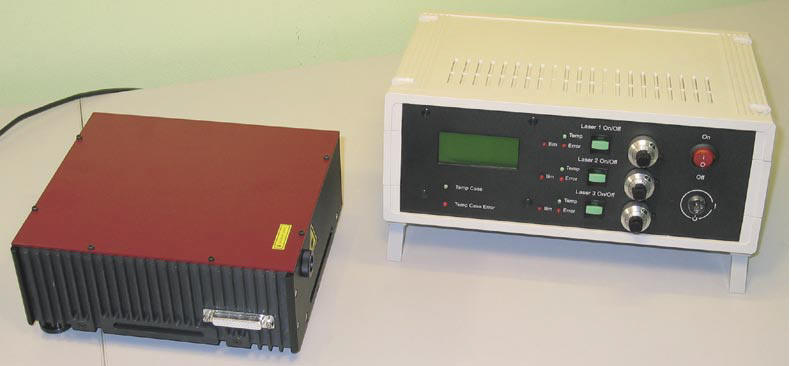
Del Mar Photonics - Newsletter
Featured Inquiry:
Do you supply laser which similar to the specs as
attached 780nm?
Del Mar Photonics reply:
yes we offer 780 nm and 1560 nm Femtosecond Fiber Laser Buccaneer SHG 160/80 which cost 20% less than T-light 780 at the same level of output power. Or if you prefer we can offer higher power model Buccaneer SHG 300/120 - request a quote
Both models offer Best price/performance ratio. And remember we have Best price quarantee!
Wavelengths 1560 nm & 780 nm (mechanically
switchable) -
request a quote
Buccaneer SHG 160/80 -
request a quote
Femtosecond Fiber Laser with SH Generation
Wavelength (switchable): 780±5 nm (fixed) or 1560±10 nm (fixed)
Pulse Width (FWHM): <120 fs
Power output (switchable apertures):
>80 mW, 780 nm, TEM00, linearly polarized or
>160 mW, 1560 nm, TEM00, linearly polarized
Repetition rate: 70 MHz
Spatial mode: TEMoo
RF SYNC out: SMA connector (200-300 mV@50 ohm load)
Mode lock status: SMA connector (3.5/0 V) and LED

Buccaneer SHG (780nm) femtosecond fiber lasers
Features:
Compact design
Truly turn-key operation
Free space or fiber-coupled output
Long life time
Best price/performance ratio, including
Best price quarantee!
Application of the Buccaneer SHG fiber laser:
Amplifier systems seeding
Terahertz generation and detection
Multi-photon microscopy
Ultrafast spectroscopy
Semiconductor device characterization
Supercontinuum generation
Optical coherence tomography
Telecommunications
Material characterization
Micromachining
Nonlinear Bioimaging
THz spectroscopy
Education
| Buccaneer SHG 160/80 | |
| Pulse Width (FWHM), fs | <120* |
| Wavelength, nm | 780±10 |
| Average output power, mW | >80 |
| Repetition rate, MHz | 70** |
| Spectral width, nm | ~7.5 |
| Outputs: |
Power output (switchable
apertures***):
>80 mW, 780 nm, TEM00, linearly polarized >160 mW, 1560 nm, TEM00, linearly polarized Service optical output: 1560 nm, FC/APC (~1 mW) RF SYNC Out: SMA connector Mode Lock Status: SMA connector (3.5/0V) and Led |
| Operating temperature, °C | 22±5 |
| Warm up time for rated accuracy,min | 20 |
| Electrical data | 110...220 VAC, 50/60Hz |
| Dimensions | |
| Laser head, mm | 292x292x136 |
| Control unit, mm | 230x200x130 |
| Crystal oven control unit, mm | 290x150x80 |
|
* - <100fs pulse durations available
upon request ** - please indicate the necessary value when placing an order (from 25 to 80MHz). *** - simultaneous dual output is also possible upon request with >80 mW@1560 nm and >80 mW@780 nm. |
|
Buccaneer SHG 300/120 -
request a quote
Related Products:
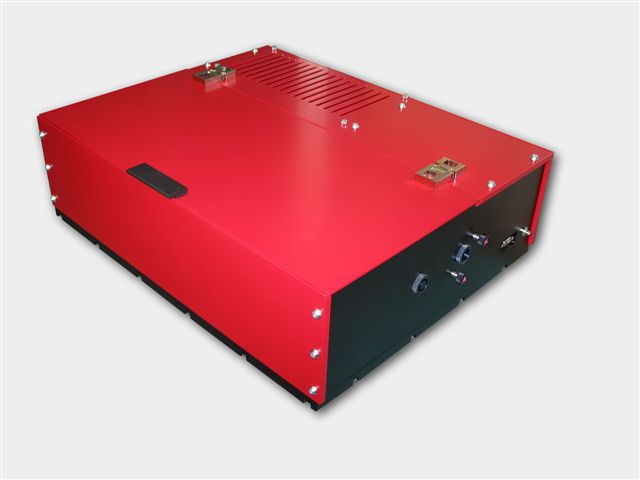 |
Trestles LH Ti:Sapphire
laser Trestles LH is a new series of high quality femtosecond Ti:Sapphire lasers for applications in scientific research, biological imaging, life sciences and precision material processing. Trestles LH includes integrated sealed, turn-key, cost-effective, diode-pumped solid-state (DPSS). Trestles LH lasers offer the most attractive pricing on the market combined with excellent performance and reliability. DPSS LH is a state-of-the-art laser designed for today’s applications. It combines superb performance and tremendous value for today’s market and has numerous advantages over all other DPSS lasers suitable for Ti:Sapphire pumping. Trestles LH can be customized to fit customer requirements and budget. Trestles LH plus OPO (Optical Parametric Oscillator)
Reserve a
spot in our Femtosecond lasers training
workshop in San Diego, California. Come to learn how to build a
femtosecond laser from a kit |
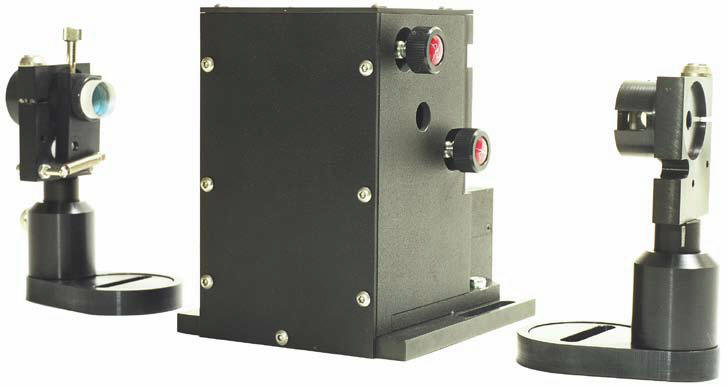 |
Pismo pulse picker The Pismo pulse picker systems is as a pulse gating system that lets single pulses or group of subsequent pulses from a femtosecond or picosecond pulse train pass through the system, and stops other radiation. The system is perfectly suitable for most commercial femtosecond oscillators and amplifiers. The system can pick either single pulses, shoot bursts (patterns of single pulses) or pick group of subsequent pulses (wider square-shaped HV pulse modification). HV pulse duration (i.e. gate open time) is 10 ns in the default Pismo 8/1 model, but can be customized from 3 to 1250 ns upon request or made variable. The frequency of the picked pulses starts with single shot to 1 kHz for the basic model, and goes up to 100 kHz for the most advanced one. The Pockels cell is supplied with a control unit that is capable of synching to the optical pulse train via a built-in photodetector unit, while electric trigger signal is also accepted. Two additional delay channels are available for synching of other equipment to the pulse picker operation. Moreover, USB connectivity and LabView-compatible drivers save a great deal of your time on storing and recalling presets, and setting up some automated experimental setups. One control unit is capable of driving of up to 3 Pockels cells, and this comes handy in complex setups or contrast-improving schemes. The system can also be modified to supply two HV pulses to one Pockels cell unit, making it a 2-channel pulse picker system. This may be essential for injection/ejection purposes when building a regenerative or multipass amplifier system. |
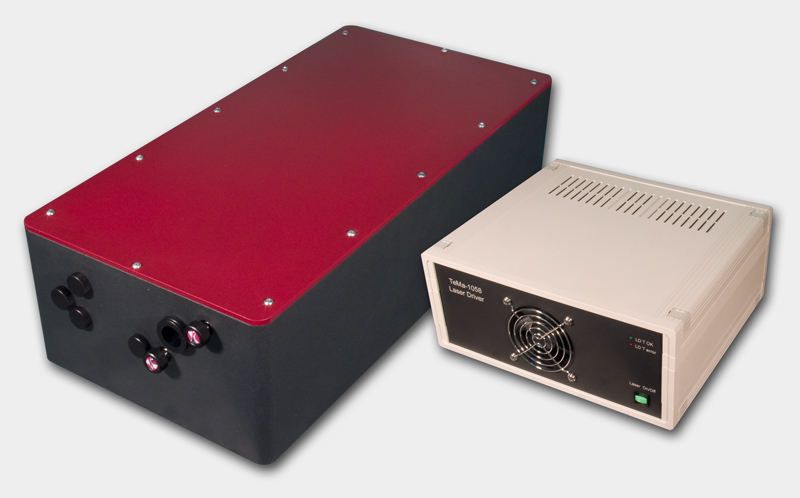 |
Tourmaline Yb-SS-1058/100 Femtosecond solid state laser system The Yb-doped Tourmaline Yb-SS laser radiates at 1058±2 nm with more than 1 W of average power, and enables the user to enjoy Ti:Sapphire level power at over-micron wavelengths. This new design from Del Mar's engineers features an integrated pump diode module for greater system stability and turn-key operation. The solid bulk body of the laser ensures maximum rigidity, while self-starting design provides for easy "plug-and-play" operation. Laser for second harmonic imaging in the retina with the voltage sensitive dye FM4-64 |
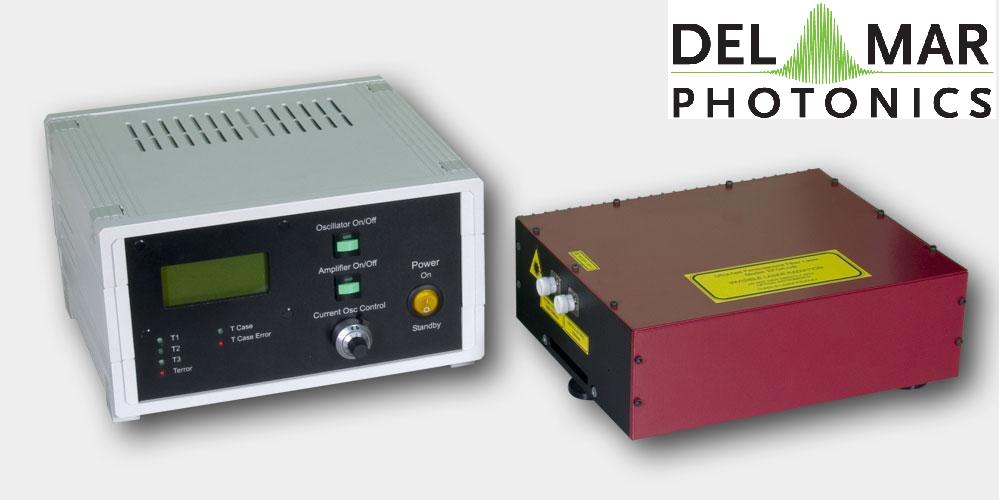 |
Femtosecond fiber laser Model Pearl-70P300
-
request a quote Femtosecond pulsed lasers are used in many fields of physics, biology, medicine and many other natural sciences and applications: material processing, multiphoton microscopy, «pump-probe» spectroscopy, parametric generation and optical frequency metrology. Femtosecond fiber lasers offer stable and steady operation without constant realignment. The Pearl-70P300 laser comprises: a passively mode-locked fiber laser, providing pulses with repetition rate 60 MHz and having duration of 250-5000 fs, an amplifier based on Er3+ doped fiber waveguide with pumping by two laser diodes, a prism compressor for amplified pulse compression. Pearl Ultra-Compact Ultrafast Picosecond Fiber Oscillator |
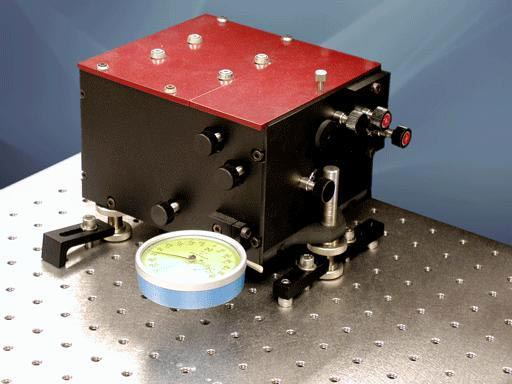 |
Reef femtosecond autocorrelators The autocorrelation technique is the most common method used to determine laser pulse width characteristics on a femtosecond time scale. The basic optical configuration of the autocorrelator is similar to that of an interferometer (Figure.1). An incoming pulse train is split into two beams of equal intensity. An adjustable optical delay is inserted into one of the arms. The two beams are then recombined within a nonlinear material (semiconductor) for two photon absorption (TPA). The incident pulses directly generate a nonlinear TPA photocurrent in the semiconductor, and the detection of this photocurrent as a function of interferometer optical delay between the interacting pulses yields the pulse autocorrelation function. The TPA process is polarization-independent and non-phasematched, simplifying alignment. Reef-RT autocorrelator measures laser pulse durations ranging from 20 femtoseconds to picosecond regime. It measures pulse widths from both low energy, high repetition rate oscillators and high energy, low repetition rate amplifiers. Compact control unit operates autocorrelator head and optional spectrometer through on-screen menus. Autocorrelation trace and spectrum can be displayed and analyzed on screen or downloaded to remote computer. New: Reef-20DDR autocorrelator - Multishot-FROG for femtosecond fiber laser oscillator and amplifier Collinear (interferometric) autocorrelation for 1300-2000 nm wavelength range |
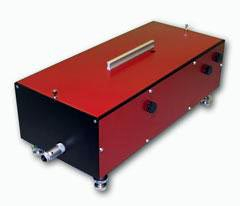 |
Trestles Fourth Harmonic Generator - request a quote Trestles FHG is designed to work with Ti:sapphire lasers, such as the Trestles Ti:sapphire laser to provide fourth harmonic generation. Trestles FHG is an affordable and easy solution to generating pulses around 200 nm. Trestles FHG is available in two versions. The first version uses the third harmonic mixed with the fundamental wavelength to produce fourth harmonic generation. This option provides the fundamental, as well as the second, third and fourth harmonics. For input of 810 nm, 1 W, 82MHz and 50 fs, output of the fourth harmonic is at 203 nm, 300-400 fs and power is 3 mW. The second option uses two separate second harmonic generation stages to produce fourth harmonic generation. With input of 810 nm, 1 W, 82 MHz and 50 fs, output of the fourth harmonic is at 210 nm, pulse width of 500 fs and power of 10 mW. The Trestles FHG from Del Mar Photonics is an easily installed solution for adding functionality to any femtosecond laser system. Extended ranges will increase capabilities for research, and specific applications such as microscopy and spectroscopy. |
 |
Near IR viewers Ultraviolet viewers are designed to observe radiation emitted by UV sources. |
 |
Hummingbird EMCCD camera The digital Hummingbird EMCCD camera combines high sensitivity, speed and high resolution. It uses Texas Instruments' 1MegaPixel Frame Transfer Impactron device which provides QE up to 65%. Hummingbird comes with a standard CameraLink output. It is the smallest and most rugged 1MP EMCCD camera in the world. It is ideally suited for any low imaging application such as hyperspectral imaging, X-ray imaging, Astronomy and low light surveillance. It is small, lightweight, low power and is therefore the ideal camera for OEM and integrators. buy online |
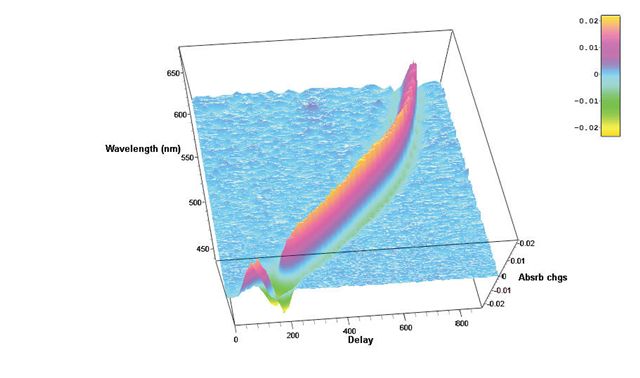 |
Hatteras-D
femtosecond transient absorption data acquisition system Future nanostructures and biological nanosystems will take advantage not only of the small dimensions of the objects but of the specific way of interaction between nano-objects. The interactions of building blocks within these nanosystems will be studied and optimized on the femtosecond time scale - says Sergey Egorov, President and CEO of Del Mar Photonics, Inc. Thus we put a lot of our efforts and resources into the development of new Ultrafast Dynamics Tools such as our Femtosecond Transient Absorption Measurements system Hatteras. Whether you want to create a new photovoltaic system that will efficiently convert photon energy in charge separation, or build a molecular complex that will dump photon energy into local heat to kill cancer cells, or create a new fluorescent probe for FRET microscopy, understanding of internal dynamics on femtosecond time scale is utterly important and requires advanced measurement techniques. Reserve a
spot in our Ultrafast Dynamics Tools
training workshop in San Diego, California. |
|
|
Beacon Femtosecond Optically Gated Fluorescence Kinetic Measurement System
-
request a quote -
pdf Reserve a
spot in our Ultrafast Dynamics Tools
training workshop in San Diego, California. |
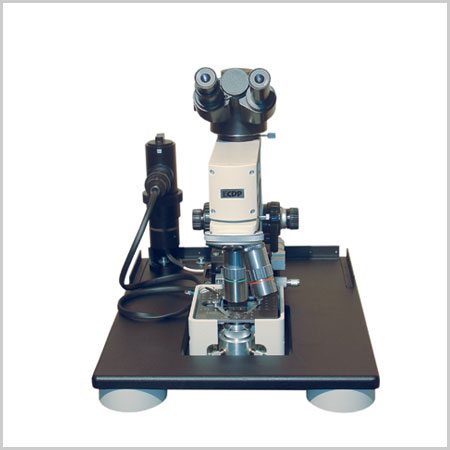 |
Near Field Scanning Optical Microscope
NSOM Godwit - best spatial optical resolution using the near field scanning optical microscope
(NSOM) principle |